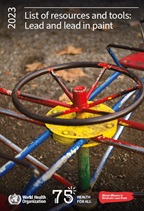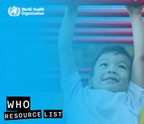Chemical safety
Chemical Safety is achieved by undertaking all activities involving chemicals in such a way as to ensure the safety of human health and the environment. It covers all chemicals, natural and manufactured, and the full range of exposure situations from the natural presence of chemicals in the environment to their extraction or synthesis, industrial production, transport use and disposal.
Chemical safety has many scientific and technical components. Among these are toxicology, ecotoxicology and the process of chemical risk assessment which requires a detailed knowledge of exposure and of biological effects.
Through the International Programme on Chemical Safety (IPCS), WHO works to establish the scientific basis for the sound management of chemicals, and to strengthen national capabilities and capacities for chemical safety.
Chemicals are part of our daily life. All living and inanimate matter is made up of chemicals and virtually every manufactured product involves the use of chemicals. Many chemicals can, when properly used, significantly contribute to the improvement of our quality of life, health and well-being. But other chemicals are highly hazardous and can negatively affect our health and environment when improperly managed.
The production and use of chemicals continues to grow worldwide, particularly in developing countries. This is likely to result in greater negative effect on health if sound chemicals management is not ensured. Multisectoral action is urgently needed to protect human health from the harmful effects of improperly managed chemicals.
WHO summarized scientific evidence and provides risk management recommendations for the 10 chemicals or groups of chemicals of major public health concern .
The Seventieth World Health Assembly approved the Road map to enhance health sector engagement in the strategic approach to international chemicals management towards the 2020 goal and beyond. The WHO Secretariat has developed a workbook that offers a structured way to assist Member States to work through the road map, choose priorities and plan activities.
One of the actions in the Chemicals road map mandates the Secretariat to establish a global chemicals and health network, with links to existing subregional, regional and international networks, to facilitate health sector implementation of the road map. Over 70 Member States have joined the WHO Global Chemicals and Health Network with forty-one participating Member States attending the inaugural meeting of the Network held 5-8 November, 2018 in Geneva.
Roadmap and workbook
Identifying areas of primary focus for engagement and additional actions
The WHO Global Chemicals and Health Network
Facilitating health sector implementation of the road map
SAICM (Strategic Approach to International Chemicals Management)
Guide efforts to produce and use chemicals in ways that minimize significant adverse impacts on human health and the environment
Intersessional process
Preparing recommendations regarding the Strategic Approach and the sound management of chemicals and waste beyond 2020


















